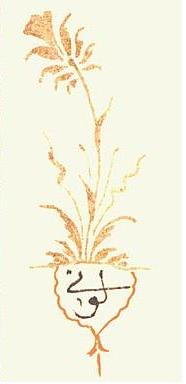User:Gusagyemang/sandbox
 | This is a user sandbox of Gusagyemang. You can use it for testing or practicing edits. This is not the sandbox where you should draft your assigned article for a dashboard.wikiedu.org course. To find the right sandbox for your assignment, visit your Dashboard course page and follow the Sandbox Draft link for your assigned article in the My Articles section. |
Lead
[edit]
Levnî Abdülcelil Çelebi (1680s-1732) was an early 18th century Ottoman court painter under Sultans Mustafa II (1695-1703) and Ahmed III. He was a prominent Ottoman miniaturist during the Tulip Period, well-regarded for his traditional yet innovative style.
Biography
[edit]He was borne in Edirne and most likely belonged to a high class family in the empire because his surname, Çelebi, means gentleman.[1]
Not much is known on how Levnî became a court painter but, he is believed to have began his work in Istanbul during Sultan Mustafa II's rule.[2] He eventually became a master artist in the SaZ style, characterized by stylized leaf designs, during his stay at the palace atelier.[2] Levnî also might have worked in Thessaloniki for a year before joining the palace atelier and becoming chief painter.[2] In spite of his high status, his name does not appear on lists of artists working for the palace at the time.[2] Nevertheless, he was well-regarded in court and out of court as an artist of his time.[2] Levnî died in Istanbul during the early 18th century.[1]
Notable works
[edit]Levnî's most notable works include the Kebir Musavver Silsilename in Topkapi Palace Library (A3109), Surname-i Vehbi ("Book of Festivals") in the Library of Ahmed II in Topkapi Palace Museum, and an Album of miniatures at the Topkapi Palace Library.[1]
Kebir Musaver Silsilmane, Topkapi Palace Museum Library (A3109)
[edit]
Also known as the Series of Sultan Portraits, this work contains twenty-three padishas, including portraits of Sultan Mahmud I, Sultan Osman III, Sultan Mustafa III, and Sultan Abdulhamid I.[2] The portraits in here build a genealogical tree using visual representations instead of the typical text of padishas. Levni's portraits in the Silsilmane were modeled after the western style portraits by Rafael and his school in the 18th century. [1]
Levnî's signature style in this work is very evident.[1] The portraits are large (14.3 cm x 23.5 cm x 16.4 cm x 25 cm), and the subjects are turned 3/4 to the right left of the view of the viewer.[2] Additionally, Levnî used a wide range of colors, bright and a personal array of pastel tones.[2] His style was very innovative while still keeping true to traditional style. This gave way to a new style of Ottoman miniature art. [1]

Surname-i Vebbi
[edit]This ceremony book contains a series of miniatures depicting scenes from the circumcision of the sons of the Sultan in 1720. The event was celebrated for fifteen days and fifteen nights and involved a lot of processions. Levnî was comissioned by Seyyd Hüseyin Vehbi to record the event in book form. [3]These miniatures are quite elaborate with various angles of movement as well as a wide range of colors and shapes.[3] The hot colors and pastels, cultural objects in the backgrounds and attires of his figures are seen as evidence of the Persian influence on Levnî's works.[3]

Album Paintings
[edit]

The Album paintings depicts portraits of various people of both noble and common backgrounds in different poses and doing everyday activities.[2] Each image is separated form the others and has its own color composition.[2][1] The styles of attire, fabric patterns and the type of activities in the Album reflect the finery and richness of the Tulip Period.[3]
Other Works
[edit]Levni was also a notable poet who wrote on the subjects of heroism and war and daily life in the Ottoman empire.[2] Some of his work are found in the poetry manuscript (Mecmua-i Es'ar, H1715) in the Treasure Library of Topkapi Palace Museum Library. Like his paintings, Levnî combined traditional styles of court s, particularly the aruz meter, as well as humor and popular language of the people.[2]
- ^ a b c d e f g Two perspectives on the tulip era : a collection of works from Rijksmuseum and Topkapı Palace Museum : Vanmour and Levnî : Topkapı Palace Museum, 19 December 2003 - 15 April 2004 ; [editors: Melis H. Şeyhun, Arzu Karamani Pekin ; translators: Reyhan Alp, Linda Stark]. Melis H. Şeyhun, Reyhan Alp. Istanbul: Topkapı Palace Museum. 2003. ISBN 975-296-057-X. OCLC 150171772.
{{cite book}}: CS1 maint: others (link) - ^ a b c d e f g h i j k l İrepoğlu, Gül. (1999). Levni : painting, poetry, color. Levni. Istanbul: Society of Friends of Topkapı Palace Museum. ISBN 975-7510-05-X. OCLC 47760746.
- ^ a b c d e Atıl, Esin (1999). Levni and the Surname : the story of an eighteenth-century Ottoman festival. Seyyit Vehbî, Levni. Istanbul: Kocbank. ISBN 975-6845-03-1. OCLC 43765527.
